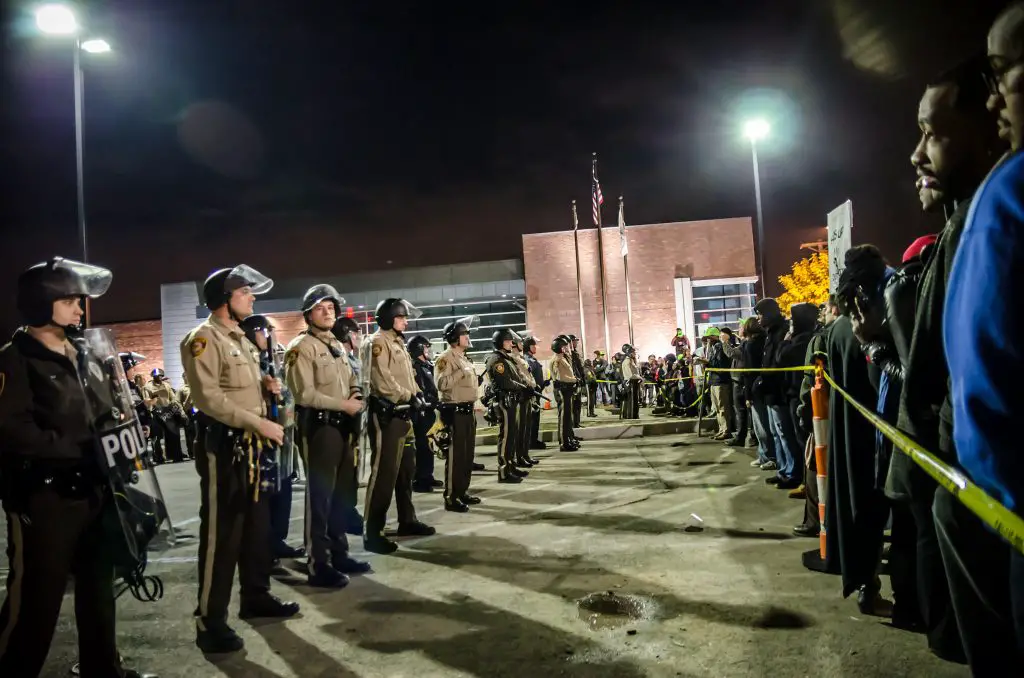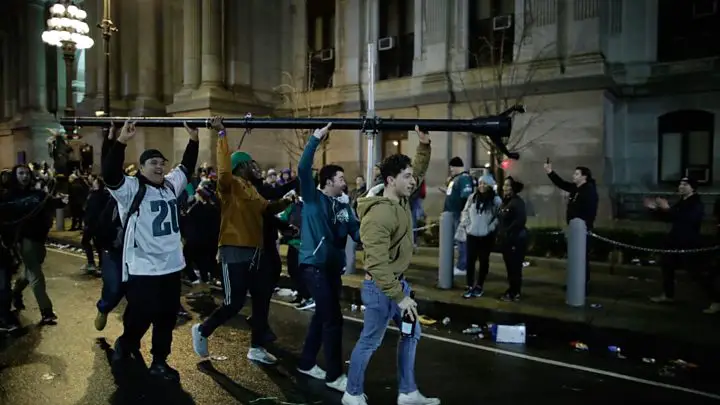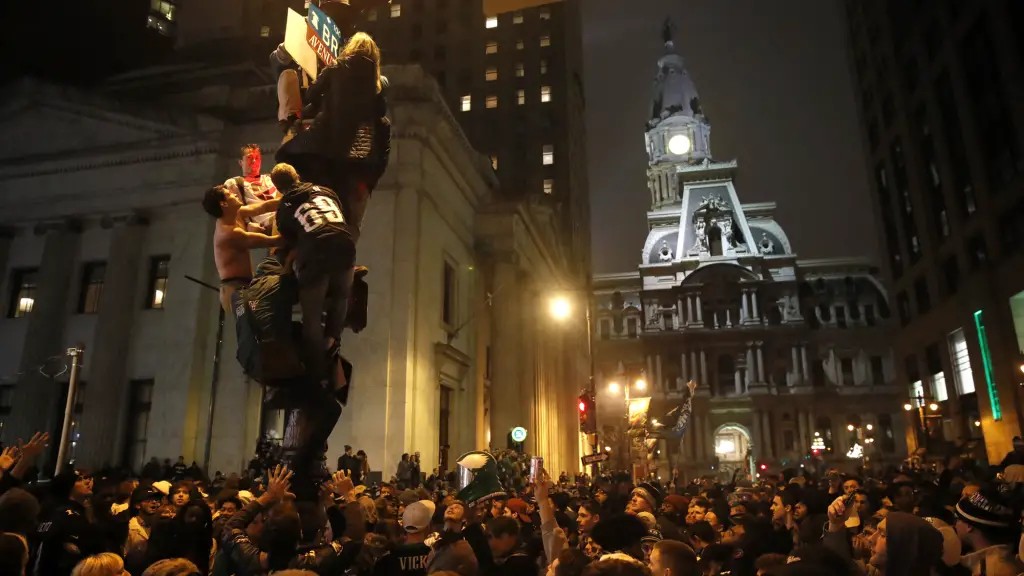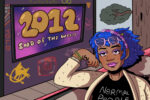In the aftermath of the Super Bowl, crowds of Eagles fans took to the streets of Philadelphia in order to properly express their excitement for their team’s victory. In other words, they smashed windows, looted stores, threw bottles and even destroyed a hotel awning. The joy was infectious as the number of those parading throughout the city grew exponentially. As a result, the Philadelphia riots will likely go down in history.
However, isn’t there a pattern? The large crowds creating mass destruction and screaming out their opinions seems all too familiar. For those who have followed what has happened in many cities across America, including Ferguson, Baltimore and Baton Rouge, it comes as no surprise to see that similar events are covered by the media as violent riots. That said, why were the Philadelphia riots any different on that infamous Sunday night?
When it comes to protests that question racial relations or oppose police brutality, the media portrays them as dangerous acts of destruction. However, when it comes to the competitive spirit, the media covers a riot spawned from a sports victory — perhaps the most anticipated Super Bowl victory in recent history — as a cultural and historical celebration, even though the damages are the same.
In both scenarios, countless energetic bodies fill the streets, and the level of emotion reaches higher than the surrounding buildings. The difference? The media covers riots in Baltimore as “violent” and “dangerous,” while they cover riots surrounding sports events or community pride as “immature” and “displays of misbehavior.” The discrepancy is all about language and how the media uses rhetoric to portray a group of people’s demonstrations of extreme emotions.
When the media uses certain terminology and images to cover something, they inadvertently bring a large amount of attention to the subject, which is a dirty trick used to get more views and start more conversations. As a result, each outlet is just trying to outdo the other.

In a video produced by Brave New Films, the news outlets showcased words like “criminals” and “thugs” in reference to predominantly black protestors. On the flip side, when people describe riots, such as the ones in the Super Bowl aftermath, they describe the white folk involved simply as “rowdy” or “passionate.”
The connotation between the two comparisons may not seem like a huge issue at first glance, but subconsciously, the reader begins to associate emotions and feelings with the words used to describe a certain party. For instance, spectators of the riots after the game found the content to be entertaining because it pertained to an event that was positive and highly sought after; their amusement was likely fueled by the media’s rhetoric they subconsciously consumed.
The unfair double standard between protesters and fans does not only pertain to the Super Bowl. In fact, it has been a long-running issue surrounding the sports industry for years. Another great example is a display that occurred after the devastating loss of the University of Kentucky at the NCAA Final Four basketball games earlier this year.
At the event, a white man in the crowd angrily flailed around a burning shirt. In response to this debacle, announcers stated that “some maybe got a little out of control.” If that is only “a little out of control,” whatever could top it would be somewhat deadly.
When watching the videos circulating after the big win, viewers will find the crowds cheering and screaming expletives while simultaneously destroying local property and causing danger to the public. However, comments from accounts on social media or news outlets regard these actions as celebratory and something to look upon fondly. After all, it’s just good old team spirit and a rightful celebration!
Although the response to the dangerous Super Bowl festivities was mostly positive, the media coverage regarding Baltimore and Ferguson relies on words such as “mobs” or “violence,” painting protestors to be the perpetrators. The president of Black Lives Matter New York, Hawk Newsome, declares, “You can riot if you’re white and your team wins, but if you’re black and being killed, you can’t speak out.” Notably, his response emphasizes the clear racial boundary between the two types of riots that have occurred.
BLM Philly explicitly voices their discontent with the behavior and hypocrisy behind the treatment of the riots in both scenarios from both parties involved and the media: “It is nothing new to us that hordes of predominantly white fans setting fires, flipping over cars and destroying property are viewed as ‘rowdy’ and engaged by police in a non-threatening manner,” they write, “while crowds of predominantly black and brown people blocking traffic, or even holding candle light vigils to protest state violence against black and brown people, are met with scores of hostile police and viewed as ‘violent.’”

The double standard is apparent; while performing similar or even drastically worse actions, it seems that white people can get away with everything people of color cannot. In fact, people online were quick to point this out in their reactions to the media coverage of the Super Bowl riot. “I agree that there is a clear and consistent double standard about rioting. A riot with mostly white people often gets turned into jokes,” a commenter writes on the official Twitter hashtag #phillypolicescanner. “Imagine the blowback if the majority of these people were black. I’m just saying, be consistent about it.”
The Twitter user points out that the blatant double standard paints a completely new picture regarding these sports-specific riots; if the majority of the protestors involved were black, there would definitely be a completely different reaction from the public. Considering the scale of the actions performed on that night — which included trashing cars and stores and causing bodily harm to others out of “excitement” — there would be no hesitation in pointing an accusatory finger at people of color and immediately condemning them for their “thug-like” behavior and their danger to society.
The whole situation is ironic because there would have been a riot regardless. If the Eagles won, Philly citizens would have taken to the streets in outrage to freely express their anger and frustration. Would the resulting reactions have remained the same despite the shift in emotions? Most likely.
Subsequently reviewing all this information, a few things are made clear. First of all, there is a definite, racially-charged divide in the media that is often utilized for public gain. Second of all, white privilege remains prevalent in society, and even though there were definitely people of color in those Philly streets, the naked eye discerns the majority of them being white folk, so they must remain responsible.
Overall, there was, and still is, a demand for fair treatment from the media; they should portray events the same way, regardless of race. Going forward, those affected only remain hopeful that these issues come to a resolution.

















